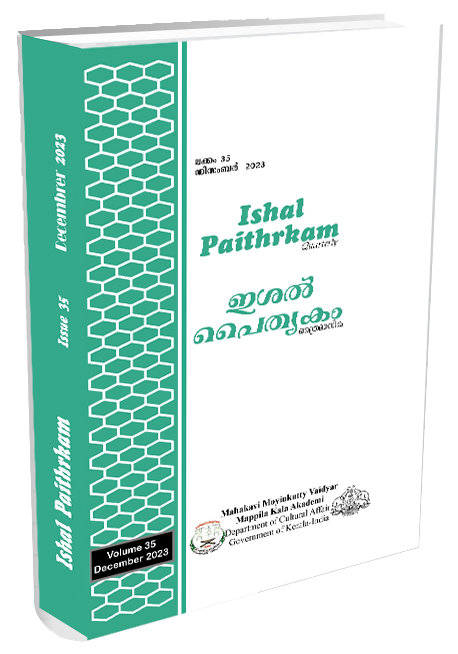From the Vantage Point of Insiders: Analysing Counter-Memorial Narratives of the Naxalite Movement
Keywords:
naxalism, counter-narratives, violence, police repression, alternative history, counter-memory, public memoryAbstract
The Naxalite movement, which emerged in the 1960s in the heartland of rural Bengal, was an armed peasant uprising that later defined the course of political resistance in India. This paper attempts to explore the concept of counter-narratives and counter-memory and their significance in forming an alternative discourse that often disrupts the sanctity of master narratives. N. Venugopal’s collection of essays, Understanding Maoists: Notes of a Participant Observer from Andhra Pradesh (2013), is a comprehensive history of the Naxalite movement in Andhra Pradesh from the perspective of an insider who had firsthand experiences of the movement. Mundoor Ravunni’s Biography Mundoor Ravunni: Thadavarayum Porattavum (Prison and Protest 2015) by Madhulamani narrates the lived experiences of a former Naxalite. By examining alternative perspectives and challenging established viewpoints, both narratives seek to uncover hidden layers of truth and provide a more nuanced understanding of the movement’s evolution, ideologies, and impact on society. This paper attempts to study how their recollections of the movement and their past become a counter-memory that challenges the popular or collective memory of the Naxalite movement. The works document unrecorded and unreported police atrocities, violence, and severe human rights violations. The books shed light on hidden layers of history, enriching our perception of this transformative period in India’s political resistance.
Downloads
References
Bamberg, M., and Molly Andrews. (2004). Considering Counter-Narratives: Narrating, resisting, making sense. John Benjamins.
Bosch, Tanja. (2016). “Memory Studies: A Brief Concept Paper”.Ed. Katy Parry.University of Leeds. http://www.comminit.com/global/content/memory- Studies-brief-concept-paper.
Demos, T.J.(2012). “Sites of Collective Counter-Memory”.Animate Project,
https://animateprojectsarchive.org/writing/essays/tj_demos.
Lipsitz, George. (2001). Time Passages: Collective Memory and American Popular Culture. University of Minnesota.
Madhulamany. (2015). Mundoor Ravunni: Thadavarayum Porattavum. Green Books.
Ministry of Home Affairs. Government of India. Left Wing Extremism. https://www.mha.gov.in/en/divisionofmha/left-wing- extremism-division.
Nora, Pierre. (1984). Realms of Memory: Rethinking the French Past. Columbia University Press.
Prime Minister’s Office. Government of India. (2006). PM’s Speech at the Chief Ministers’ Meet on Naxalism. https://archivepmo.nic.in/drmanmohansingh/speech-details.php?nodeid=302
Shah, Alpha. (2018). Nightmarch: A Journey into India’s Naxal Heartlands. Harper Collins.
Venugopal, N. (2013). Understanding Maoists: Notes of a Participant Observer from Andhra Pradesh. Setu Prakasini.
Weedon, C. (1997). Feminist Practice and Poststructuralist Theory. Blackwell.
Whitehead, Anne.(2009). Memory. Routledge.
Downloads
Published
Issue
Section
License
Copyright (c) 2025 ISHAL PAITHRKAM

This work is licensed under a Creative Commons Attribution-NoDerivatives 4.0 International License.

